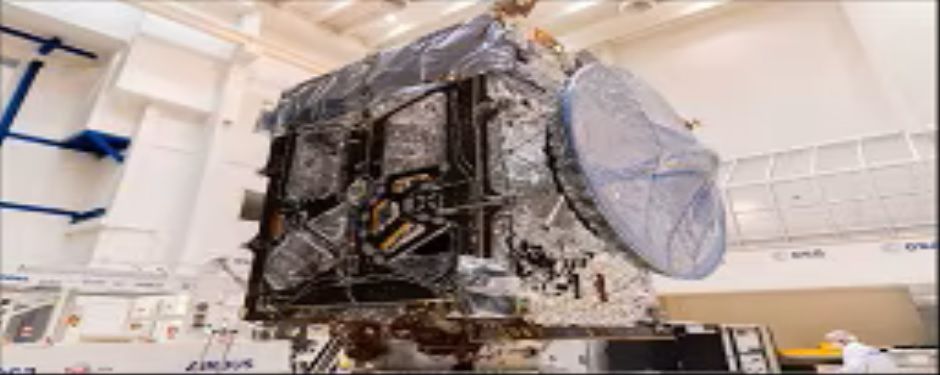ESA Mission to Explore Jupiter’s Moons Features DuPont Technology

image credit: ESA
With a 50-year heritage of protecting exploratory space missions from the temperature extremes found beyond Earth’s orbit, the recently launched JUICE (JUpiter ICy moons Explorer) spacecraft from the European Space Agency (ESA) included DuPont™ Kapton® polyimide films protecting the sensitive electronics onboard the mission.
Launched on April 14, 2023, from Kourou, French Guiana, the €1.7 billion ($1.9 billion), eight-year, 600-million-kilometer trip will explore Jupiter’s three largest moons (Callisto, Europa and Ganymede) in the hopes of determining whether life is possible on these dwarf planets. When it took off, the 6.2-ton spacecraft carried an 85 square meter solar array and 10 state-of-the-art instruments, comprising the most powerful remote sensing, geophysical and in situ payload complement ever flown to the outer Solar System.
During the long trip, the JUICE spacecraft will have to endure some serious temperature extremes from the +250 degrees Celsius temperatures during the flyby of Venus, to the -230 degrees Celsius after arrival at Jupiter--with even colder conditions during solar eclipses, when the spacecraft will be in the planet's shadow.
The JUICE thermal control system is designed to minimize the impact of the extreme temperatures on the spacecraft and uses a high-efficiency, 22-layer, MLI (Multi-Layer Insulation) blanket featuring Kapton® polyimide film. The MLI will moderate the external temperature during the spacecraft's closest approach to the Sun and limit the heat leakage in the cold Jupiter environment to minimize demand for power from the spacecraft's heaters, especially when its instruments are operating during the science and communication phases. Because of Jupiter's distance from the Sun, the amount of incoming solar energy is 25 times lower than on Earth, making power generation and conservation a critical factor during operation of the spacecraft.
According to Tim Scott, Business Development Leader for the Aerospace & Defense industry solutions team in DuPont’s Electronics & Industrial business, the protective material used to blanket the spacecraft's exterior is black-colored DuPont™ Kapton® 160XC polyimide film. “For decades, our Kapton® polyimide films have been the material of choice for use in MLI blankets, deployable radiators, sun shields, drag and de-orbit sails, reflector antennas and thermofoil heaters due to their ability to withstand the harsh conditions experienced in space,” said Scott. “Kapton® polyimide films offer excellent reliability in extreme temperatures, ultra-vacuum, solar ultraviolet (UV) radiation, and charged particle (ionizing) radiation. We are very proud to have played a small role in the support of the recently launched JUICE spacecraft.”
Scott said the DuPont development team is working on newer versions of Kapton® polyimide films to specifically address the degradation from single-oxygen atoms (atomic oxygen [AO]) materials experience in the Low-Earth Orbit (LEO) environment. He said with the growth of large LEO satellite constellations from companies such as SpaceX, OneWeb, and Amazon sweeping the space industry, we could see up to 50,000 satellites orbiting the Earth in the next decade with DuPont technology playing a key role.

image credit: ESA-SJM Photography
Related Information
DuPont’s EKC post-CMP cleaners are aqueous formulations used for post-CMP cleaning designed to protect planarized metals and dielectrics.
Discover DuPont’s range of materials offerings for CMP, including slurries and hard/soft polishing pads for many CMP applications.
Specialty removal and clean chemistries for use in post-chemical mechanical polishing (CMP) and post-etch processes.
We’re here to help.
We love to talk about how our electronics solutions can build business, commercialize products,
and solve the challenges of our time.